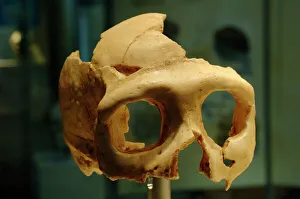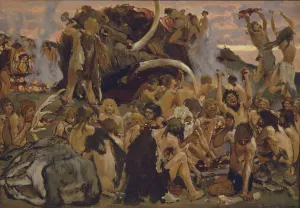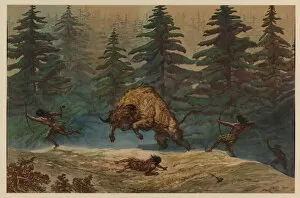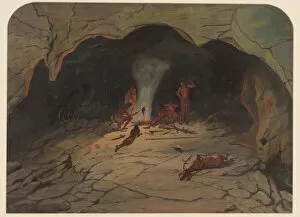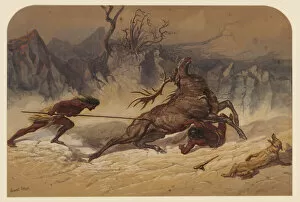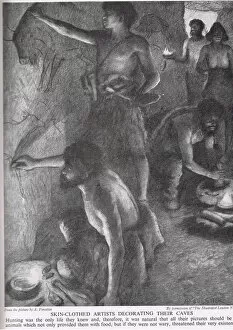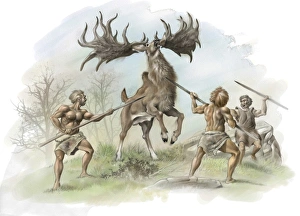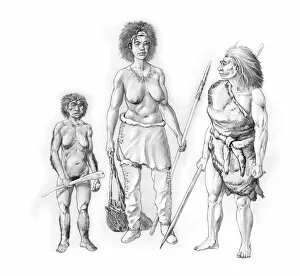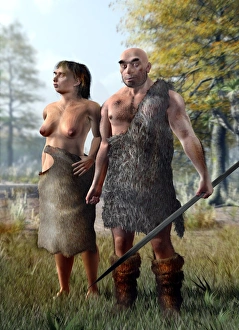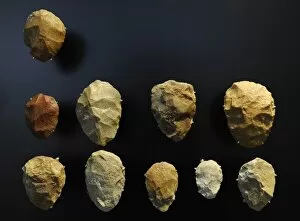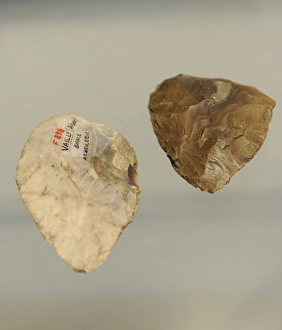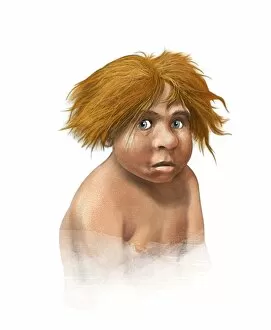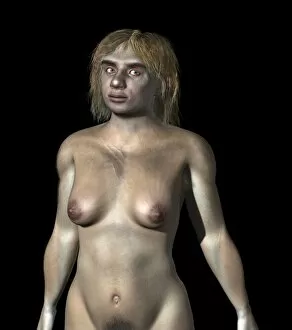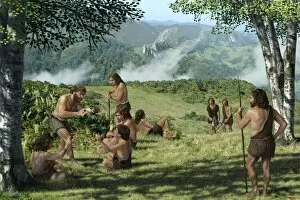Neanderthals Collection
Neanderthals, also known as Homo neanderthalensis, were an ancient species of humans that lived during the Stone Age
All Professionally Made to Order for Quick Shipping
Neanderthals, also known as Homo neanderthalensis, were an ancient species of humans that lived during the Stone Age. Their existence is depicted through various artworks and illustrations from the 19th century. One such artwork is a skull of a Neanderthal, which provides valuable insights into their physical features and characteristics. This fossilized remains serve as a window into our evolutionary past and helps scientists understand the similarities and differences between Neanderthals and modern humans. The paintings by Viktor Mikhaylovich Vasnetsov showcase scenes from the prehistoric era. In "A Feast, " we get a glimpse of how Neanderthals gathered together to share food in their community. The vibrant colors bring life to this ancient scene, depicting their social interactions and cooperation. "Hunting" captures the adventurous spirit of these early humans as they pursued bison or woolly mammoths for survival. These illustrations highlight their resourcefulness in using tools like spears or stone weapons to secure food for themselves and their families. In "Prehistoric Camp, " we witness Neanderthal settlements where they built shelters made from natural materials like animal skins or branches. These camps served as safe havens where they could rest after long days of hunting or gathering resources. Another fascinating illustration shows artists decorating caves with intricate designs while clad in skin-clothes. This suggests that Neanderthals possessed artistic abilities, expressing themselves through cave paintings or other forms of creative expression. Leon Maxime Faivre's painting titled "Two Mothers" portrays two Neanderthal women caring for their children, emphasizing the importance of family bonds within this ancient society. It reminds us that despite living thousands of years ago, these individuals had similar emotions and nurturing instincts just like modern humans do today.

